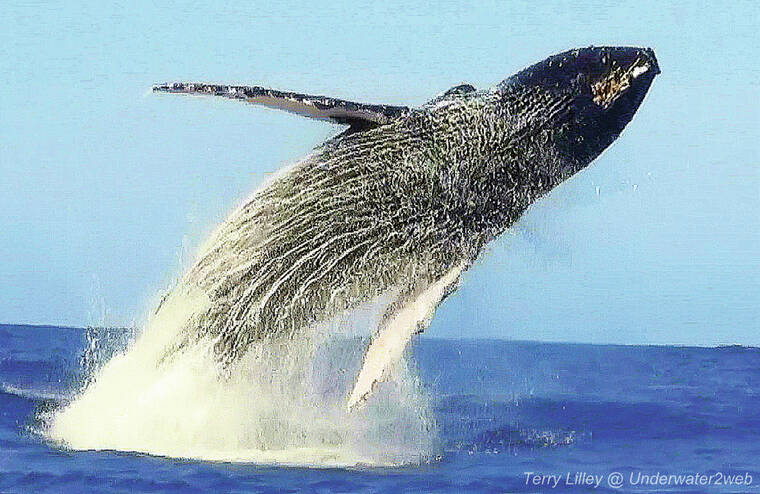Fifty years ago, almost 95 percent of the large whale species had been harpooned. There were very few if any humpbacks that came to Hawai‘i to give birth back a half century ago, but today there are thousands of these magnificent creatures that bless our shores.
The return of the humpbacks from near extinction is one of the greatest conservation success stories. We now have over 5,000 humpbacks that come to Hawai‘i to give birth and breed, and this activity brings in millions of dollars from the tourism industry, as people watch the whales breach and slap fins on the sea surface.
We still do not fully understand whale behavior, but by using modern science we are learning new things about these gentle giants everyday.
The main value of each whale is not from tourism, but it is from their ability to save our entire planet from the destructive human race. New science being conducted by the University of California at Santa Cruz has shown that the humpbacks dive down into the deep ocean and gulp down nutrients like nitrogen and iron.
Along with the small fish and krill they feed on, they defecate the oceans fertilizer on the sea surface. Their poop acts in the same way as natural fertilizers work in your garden, it stimulates plant growth.
When the whale poops it spreads the nutrients needed for algae to grow on the sea surface where it can photosynthesize in the sunshine. This algae growth is vitally important to us humans because it produces over 50 percent of the oxygen we breathe.
The algae in the sea absorbs four times more global warming CO2 than the Amazon rainforest does. A healthy ocean keeps us humans alive. More whales means more air to breathe. Just that simple.
The university came up with an AI model that shows that each whale is worth over $2 million in “earth services”. The whale also brings in tourist dollars and gives us a great deal of pleasure and connection to the sea.
At one time, each whale was valued at $500 to be killed and their blubber used for lamp oil. We have come a long way in understanding the balance of nature and how the earth can remain a healthy environment for us humans to live in.
Most animals on earth are needed to create a sustainable planet for us. The whales have known this for over 30 millions years, but we are a little slow at figuring out the delicate balance on earth we need to have to live with our animal family.
Buckminister Fuller put it nicely by saying “on spaceship earth, there are no passengers: everyone is crew.”
So the next time you see an amazing huge humpback whale breach high into the air, just remember “if they live, we live.” You can see my entire documentary movie about our Hawaiian whales, dolphins and monk seals at : https://www.youtube.com/watch?v=W_teguMeloU&authuser=0
•••
Terry Lilley is a marine biologist living in Hanalei Kaua‘i and co-founder of Reef Guardians Hawai‘i, a nonprofit on a mission to provide education and resources to protect the coral reef. To donate to Reef Guardians Hawaii go to www.reefguardianshawaii.org.





